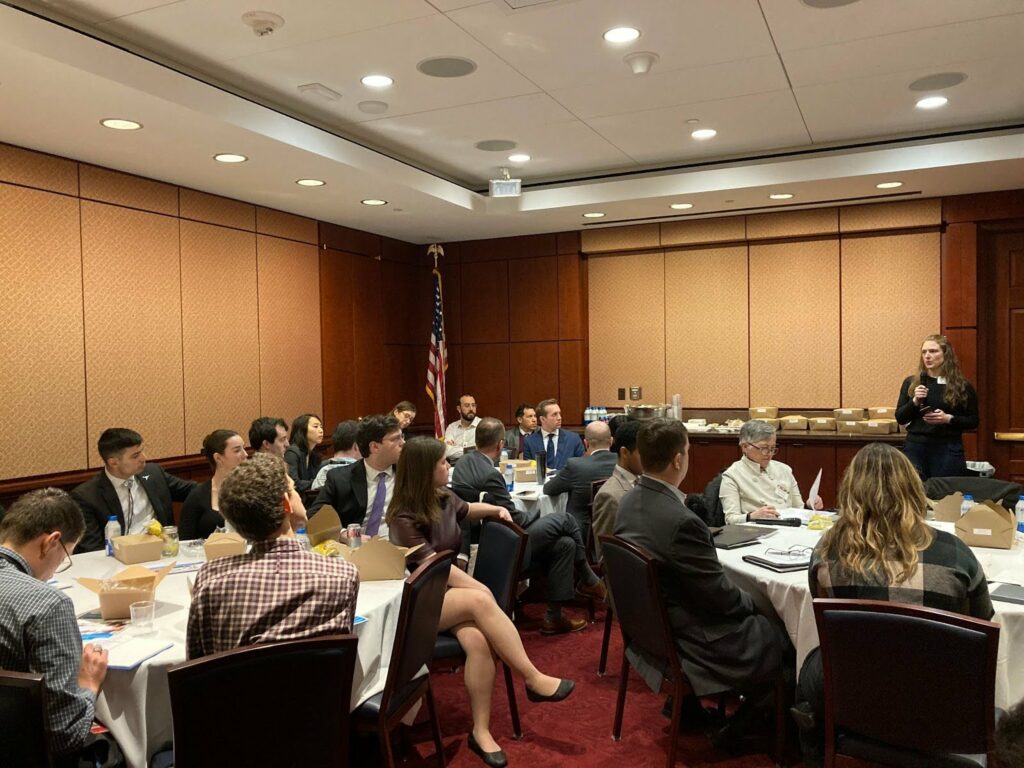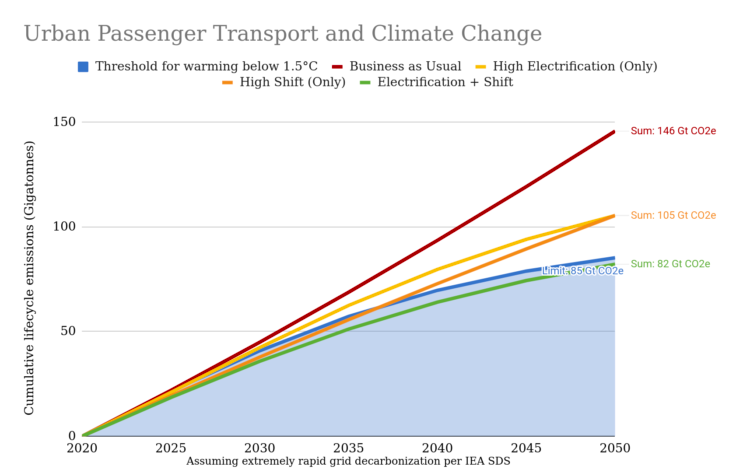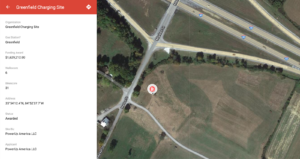Takeaways from the Smart Growth Electrification Roundtable
On January 23, 2024, Transportation for America, in partnership with the Bicameral Electrification Caucus, organized a roundtable discussion on Capitol Hill on the vital connection between smart growth and transportation electrification, and the strategies that need to be prioritized to achieve transportation equity and decarbonization goals in the next transportation reauthorization. When it comes to decarbonizing transportation it’s not about either-or. We need both electrification and more mobility choices to meet our emissions targets.

Roundtable recap
In our EVs and Smart Growth series, we discussed many of the opportunities, strategies and challenges that could be deployed to maximize the emissions-reducing benefits of electrification and smart growth strategies. The top takeaway? We need to implement both policies that give people more mobility options and transportation electrification policies. Otherwise, we will not hit our climate targets. Last month, we brought together experts from the CHARGE Coalition to amplify the many different ways to implement transportation electrification while achieving sustainable, smart growth goals.
At the roundtable, we were joined by the Joint Office of Energy and Transportation, the federal agency at the forefront of transportation electrification. Created as part of the Bipartisan Infrastructure Law, the Joint Office is leading the push to electrify, providing technical assistance to communities, developing reports, convening stakeholders, and recently, awarding funds for charger repair and innovative projects.
Forth, a nonprofit focused on expanding equitable access to electric transportation, was recently awarded funds by the Joint Office to help support an equitable electric transition. At the roundtable, Forth amplified their work building shared electric mobility programs through carshare and increasing access to charging in multifamily housing.
Forth wasn’t the only one touting the benefits of electric carshare programs. East Metro Strong has been working on carshare hubs centering multifamily and affordable housing from their base in Minneapolis-St. Paul. In areas where transit does not yet work for all trips, carshare can bridge mobility gaps that might otherwise require people to take on the costly prospect of car ownership—and this strategy should have a place in the next reauthorization.
Forth will be hosting a workshop on Equitable Electrification Transportation for Communities in Washington, DC on March 14, 2024.
re:Charge, a company working to build shared electric micromobility charging hubs to decrease downtime and charging costs, joined the roundtable to highlight the success of shared micromobility programs in cities. They also explained how sustained federal support could unlock the mode’s equity-boosting and traffic-reducing benefits. For example, while investor-owned shared-fleet micromobility has seen success in some markets and struggles in others, e-micromobility has helped catapult DC’s Capital Bikeshare to record heights.
As the transition to electrified transit fleets continues, jurisdictions will need support and resources to manage their new assets. At the roundtable, the Center for Transportation and the Environment advocated for increased technical assistance and support to ensure smooth clean fleet deployments. CALSTART, another organization helping lead the transition for buses, trucks, and other medium- and heavy-duty vehicles, outlined the opportunities to draw from state-level transportation electrification programs. Innovative programs are available at the state level, including the Clean Mobility Options program, which provides in-depth technical assistance to communities throughout the implementation process. New transportation reauthorization programs should be designed to clearly allow new approaches that work for cities and provide the support needed to implement them.
The Zero Emission Transportation Association, representing EV and charger manufacturers and other industries in the EV environment, emphasized the growing importance of charger co-location with amenities (or what we call charger-oriented development), and recognition from industry that it’s time to move charging away from the traditional gas station model. Finally, the New Urban Mobility Alliance (NUMO) uplifted how relatively small but smart charging policies could help make the difference for an urbanized electric transition. In dense contexts, private charging infrastructure can be leveraged to increase charging options for more users with the simple addition of a cable and meter. Policies should take into account ways that private investments can be leveraged to boost charger network coverage for all users.
Two paths forward

As we approach the midpoint for the current transportation reauthorization, we’re finally starting to see how the infrastructure law’s new electric vehicle infrastructure programs are charting a path toward an electrified future.
Last month, we saw the release of the first set of the Charging and Fueling Infrastructure program awards, which put out $622 million in funding for hydrogen fuel stations and over 7,000 EV chargers—and many of these chargers are sited in communities that need them most. Awardees selected would site both level 2 and level 3 fast chargers in disadvantaged communities, near public parks and libraries, small rural towns, and at multifamily housing. These are all places that would benefit greatly from electrification, but typically can’t rely on private investment. In some cases, awarded projects emphasized multimodal connections, including e-micromobility hubs, transit-oriented developments and even EV carshare—all strategies we uplifted in our EVs and Smart Growth series.

These new CFI awards show that when we double-down on integrating EV investments with smart growth strategies, we can invest in a more equitable and community-oriented electrified future, all while reducing emissions even further. However, as the National Electric Vehicle Infrastructure Program continues to roll out across the country, we see a contrast with the Charging and Fueling Infrastructure Program that illustrates that how we choose to electrify will have implications beyond the quantity of chargers we build.
With the latest announcement of state’s NEVI-funded chargers, there is now a clear pattern to the program, evident among the first dozen states to grant site-level awards. NEVI limits projects to sites closest to highways, without any requirement to invest in communities’ existing infrastructure—continuing a gas station mindset that doesn’t line up with EV needs. While NEVI may alleviate range anxiety, it’s currently functioning as another federal program that incentivizes continued sprawl and greenfield development.
We’ve updated our map of awardee NEVI sites, color coded with Walkscore (red is less than 50, orange is 50-75, and green is anything with a Walkscore of 75 or greater), which you can find here:
With reauthorization fast approaching, policymakers need a clear model for what transportation electrification should look like. We need to uplift policies, programs, and projects that put communities and equity first while reducing the need for people to rely entirely on cars for their mobility needs. It’s either that, or we continue the same unsustainable development and transportation choices that gave us the very climate crisis electrification is supposed to solve. EVs must be implemented with smart growth strategies, or else we might just miss the whole point of electrification—and miss our climate targets in the process. Future EV programs should prioritize projects that acknowledge this and contribute to the buildout of new e-micromobility and transit infrastructure and support zero-emission, smart growth infrastructure.



















